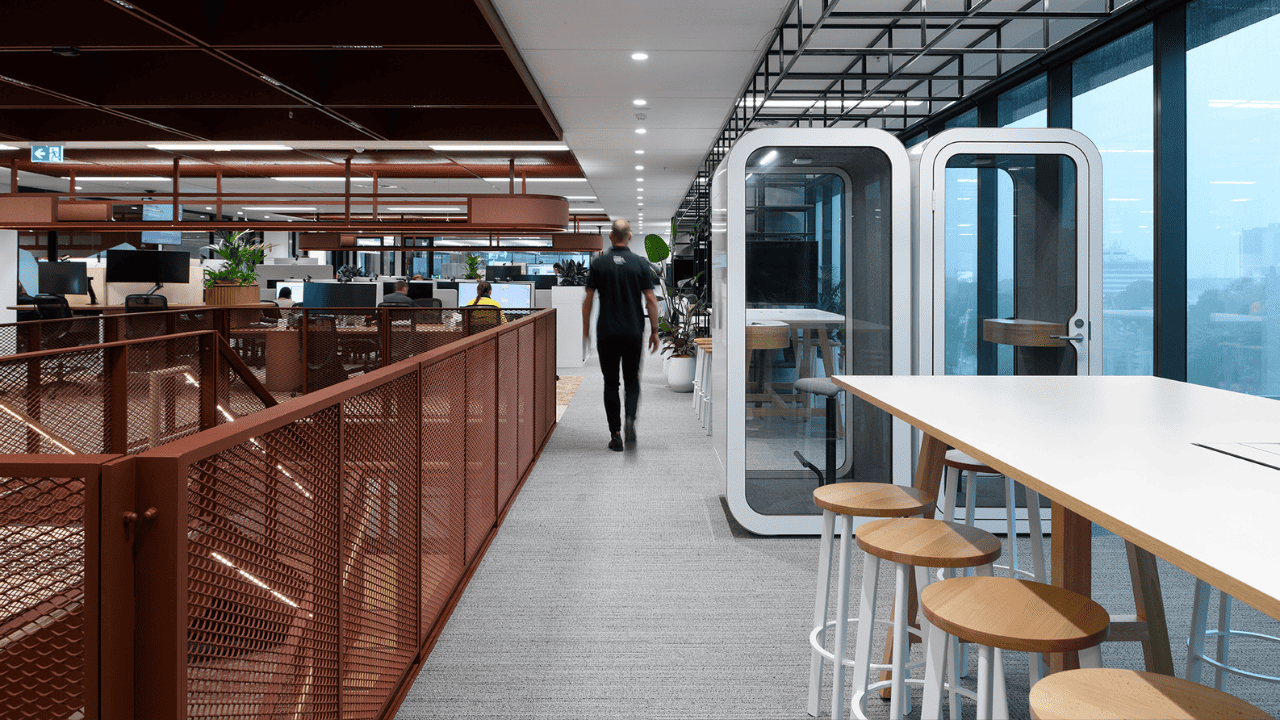
26 Feb Flexibility: what’s hot and what’s not
And what’s best for your business?
As a workplace strategist I often get asked: “What’s the best flexible work solution — hot-desking, activity-based work or hybrid work?”
The short answer is that it’s important to understand the difference between all three.
Hot-desking
Hot-desking became popular in the early 2000s when mobile technology went mainstream and laptops and wireless connectivity meant employees didn’t have to work from a fixed desk.
My verdict: ????
I don’t advocate for hot-desking at all. No matter how it might be ‘sold’ to employees, hot-desking is really about cramming more people into less space without any added amenities.
Activity-based work (ABW)
ABW and hot-desking often get confused, but they are not the same thing. ABW has also been fuelled by advances in technology, but perhaps more so by shifts in workplace cultures, employee expectations, and our understanding of what enables optimum performance. ABW recognises that different tasks require different work environments and gives employees the autonomy to choose a space that best suits their needs at any given time, like a bright, open, high-energy space for collaboration, or a quiet low-sensory zone for reflection, focused work or unwinding.
My verdict: ????
ABW gives employees the autonomy to choose spaces that suit their needs and personal preferences, which can enhance productivity, creativity, collaboration, wellbeing and employee satisfaction — and there’s a swathe of research that links these outcomes to improved business performance.
???? My tips for ABW:
- I strongly recommend implementing a behaviour awareness program ahead of a move to ABW to ensure everyone is on the same page about what types of energy, behaviours and activities are appropriate for different workspaces.
- It’s also important to ensure that technology is integrated for a seamless plug-and-play experience as employees move through different spaces for different tasks.
Hybrid work
Unlike hot-desking and ABW, which both require attendance at work locations, hybrid assumes that a portion of work can be done remotely — it effectively becomes another option in the ABW landscape. During the pandemic ‘remote’ was mostly associated with ‘at home’, however in today’s climate, ‘remote’ encompasses far more variety from the local cafe, to working while on holidays overseas. Hybrid work really acknowledges that not all work needs to be done in the office or in person.
My verdict: ????
Hybrid work arrangements provide employees with the autonomy to choose when they will attend a work-based location and when they’ll work remotely, which supports work-life balance, reduced commute times, and feelings of mutual trust and respect. For businesses, this can mean access to a wider talent pool and reduced office space and overhead expenses.
???? My tips for hybrid work:
- To support trust and performance ensure that role responsibilities, communication expectations, and goals and deliverables are clear.
- To ensure that culture and team effectiveness remain strong, map out and agree on the rhythms and rituals for when teams come together in person or virtually, and when they are free to work remotely.
- It’s really important to get clear on the purpose of coming into the office. For many businesses the purpose of the in-office these days is for socialisation, collaboration, mentoring and learning — in which case, employees and leaders should coordinate their in-office days so that they can spend time shadowing, mentoring, solving problems, and discussing performance.
So, what is the best flexible work solution for your business?
With recent studies out of Swinburne University suggesting that 43% of Australian workers would likely leave an employer that does not offer flexibility, it’s fair to say that flexibility is a real deal breaker.
If you’re keen to chat more about COMUNiTI’s insights on workplace flexibility, get in touch!
Mel
x


